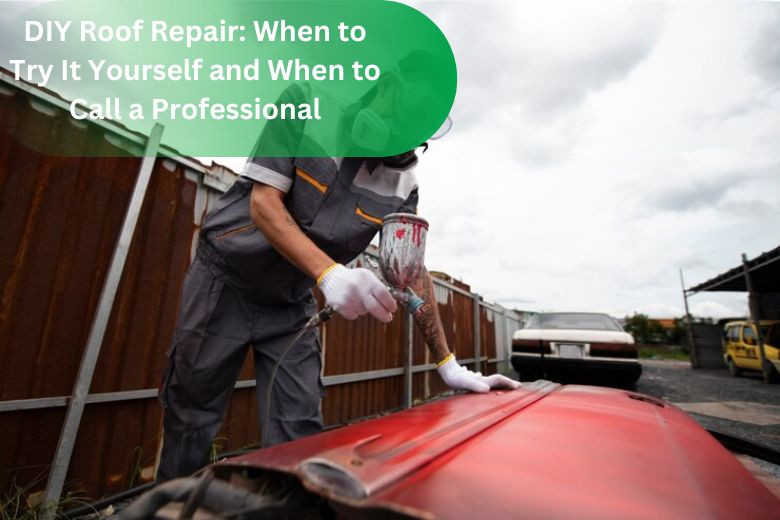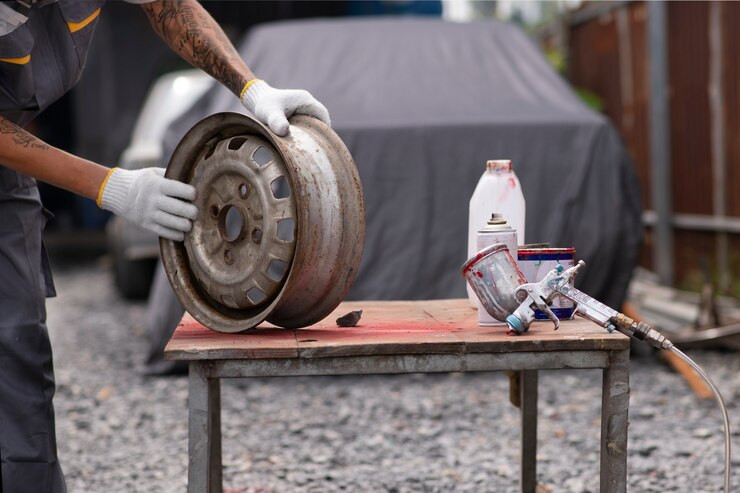DIY Roof Repair: When to Try It Yourself and When to Call a Professional
Posted on September 06, 2024 by Admin

Of all the undertakings involved in home maintenance, repairing the roof constitutes one of the most significant endeavors. A properly maintained roof protects a home from all elements, allowing the family to reside in comfort and safety. As DIY projects in home improvement continue to increase, most homeowners would likely consider a DIY roof repair as the remedy for cost-effectiveness. However, it's always important to know when you can fix your roof yourself and when you must consult a professional. The following guide discusses the pros and cons of DIY roof repair and how to make a sound decision.
When to Attempt DIY Roof Repair
1. Minor Repairs
DIY roof repair can be helpful with small issues, for example, replacing a few damaged shingles or sealing some minor leaks. These are fairly easy tasks that would not require a lot of expertise or specialized tools and equipment. The materials required to perform such repairs can easily be located in most home improvement shops. The minor repairs of the roof can also be manageable if you are comfortable working on a ladder and have some DIY experience.
2. Gutter Maintenance
Other aspects of roof maintenance include cleaning the gutters, which most homeowners can perform themselves. Damage to the roof and foundation from water can be easily avoided by cleaning out the gutters from time to time. Using a good ladder, rubber gloves, and a gutter scoop, this can be done without hiring a professional.
3. Searching for Damage
Routine roof checks can help detect any problems that are developing in their incipient stages. From the ground or with a pair of binoculars, one is able to note the absence of shingles or the loose condition of flashing. With regular inspections, you will be able to stay ahead in maintenance and make minor repairs before they become serious problems.
4. Patching Small Holes
While small holes or punctures caused by fallen branches or other debris can often be patched using roofing cement and a piece of matching shingle, DIY roof repair will help prevent leaks and further deterioration for such minor damages. Ensure the patch is securely in place and sealed properly to be impervious to the elements.

When to Call a Professional
1. Extensive Damage
If your roof is in really bad shape at the point where shingles are missing across your roof, there are significant leaks, or your roof has a structural issue then you should definitely contact a professional. Significant roof problems require professional tools and know-how to get a complete, safe repair. Many DIYers who have attempted to work on their roof under these circumstances have come up with a lot of redneck fixes and safety issues.
2. Roof Replacement
Full roofing replacement is a high-tech, labor-heavy exercise that is best left to specialists. In simple terms, this exercise involves heavy measurements and installation measures and uses special materials. When you hire the services of a professional, your safety concerns are minimized, with a guarantee of the correct installation for an assured long life of the new roof.
3. Safety
This may also be risky if you have not worked much before at heights or with safety gear. If you aren't comfortable or you are thinking you cannot safely complete your own DIY repair, then you are better off hiring an expert. A professional perfectly knows how to move up there safely and efficiently with minimal potential for accidents.
4. Hidden Damage
Sometimes, roof damage may not be so obvious to the human eye. Problems related to water damage, growth of mold, or structural weaknesses may not be apparent during a DIY inspection. Professional roofers have the expertise to identify and address hidden problems, ensuring comprehensive repairs that protect your home from further damage.
5. Warranty and Insurance
Many roofing products come with associated warranties that will be voided if installation is not done through a certified contractor. Further, trying to fix the roof can affect a homeowner's insurance policy coverage in case of further damage. A professional will make a guarantee and insurance policy applicable over the repairs.
Also Read :
How to Identify and Repair Hidden Water Leaks
The Benefits of Regular Drain Cleaning Services
How to Plan a Bathroom Remodel with Plumbing in Mind
Faqs
-
1. What small repairs can I handle with DIY roof repair?
You can fix small problems, including replacing some broken shingles with sealing for those small leaks, cleaning your gutters, or even patching small holes debris was thrown through. Most of these tasks do not require one to have a vast amount of knowledge or any special tools.
-
2. At what point should I stop doing DIY roof repair and call in somebody?
You should call in a professional for serious damage, a new roof, for safety, hidden damage, or if you have concerns about warranties and insurance. The professionals are definitely better suited for the more complex, or possibly dangerous, types of repair.
-
3. What is the safest way to determine damage to my roof?
Roof Inspection A good ladder and binoculars can be used to inspect your roof from the ground to look for missing shingles, loose flashing, and other visible damage. Regular visual inspections such as this one can help uncover problems before they put you at risk.
-
4. How often should I perform roof inspections and maintenance?
It is also desirable that you check and carry out maintenance on your roof at least two times a year, best in either the spring or fall, to be sure. It is also recommended that you inspect your roof shortly after weathering incidents to easily detect the damage and, therefore, attend to it quickly. Regular maintenance is the surest policy for adding years of life to a roof.
Recent Post
- Top Plumbing Service Providers in Arizona, USA
- Top 10 Electrician Service Providers in Alabama, USA
- Top 20 Roof Repair Service Providers in Alabama, USA
- The Role of Roof Insulation in Energy Efficiency: Tips and Tricks
- Understanding Roof Damage from Wildlife and How to Prevent It
- How to Choose the Best Roofing Contractor for Emergency Repairs
- Roofing Maintenance for Historic Homes: Preserving Architectural Integrity
- The Importance of Proper Attic Ventilation for Roof Health
- How to Identify and Prevent Roof Mold and Mildew
- The Best Practices for Removing Snow from Your Roof